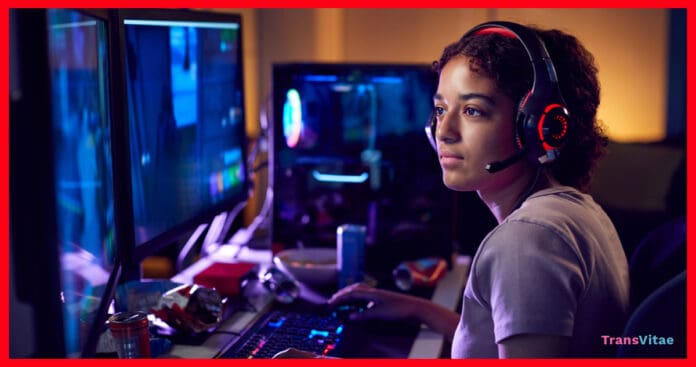The digital universe of video gaming has long been a refuge and battleground for identity, expression, and community. For transgender gamers, these virtual landscapes offer unique opportunities for exploration and self-representation, yet they also pose distinct challenges in terms of inclusivity and acceptance.
This article illuminates the gaming experiences of transgender individuals, highlighting the triumphs and trials of seeking inclusive spaces in the gaming world.
The Reality for Transgender Gamers
Gaming serves as a double-edged sword for many transgender players. On one side, it’s a sanctuary where one can explore identity freely, far from the constraints of the physical world. Character customization features in games like The Sims or World of Warcraft allow players to see themselves in their avatars, offering a digital mirror to their preferred self-image.
However, the other side shows a harsher reality that is characterized by exclusion, harassment, and a lack of representation. The anonymity of online gaming, while a boon in some respects, can also embolden discriminatory behavior. Trans gamers frequently encounter gender policing, misgendering, and hostile environments in less moderated spaces.
Champions of Inclusivity: Games Leading the Way
Certain titles and developers have taken significant strides towards creating more inclusive gaming environments. Dream Daddy: A Dad Dating Simulator and Life is Strange stand out by featuring transgender characters in meaningful roles, not just as tokenistic gestures. These games, among others, provide a narrative depth that resonates with transgender players, offering them visibility and representation.
Indie games, too, have been at the forefront of inclusivity, with developers like Celeste incorporating trans narratives into their games. These efforts not only validate the experiences of transgender players but also educate their cisgender counterparts, fostering empathy and understanding within the community.
Areas for Improvement: The Next Level of Inclusivity
Despite these advancements, there’s still much work to be done. Mainstream games often fall short in providing comprehensive character customization options that cater to the diverse needs of transgender gamers. The ability to alter one’s character’s gender expression freely, without being locked into binary options or predefined looks, remains a rarity.
Moreover, online harassment continues to plague many gaming communities. Platforms and developers must implement and enforce stricter policies against discrimination, creating safer spaces for all players. Engagement with the transgender community during game development could also lead to more nuanced and respectful representations.
The Community’s Role: Building Bridges in Online Realms
The responsibility for creating inclusive spaces does not rest solely on the shoulders of game developers. The gaming community itself plays a crucial role in shaping the culture of online realms. Gamers can advocate for positive change by supporting titles that prioritize inclusivity, calling out discrimination, and fostering welcoming environments for players of all identities.
The Bottom Line
The journey towards fully inclusive online gaming realms is ongoing. While challenges remain, the progress made thus far offers hope and a vision for a future where all gamers, regardless of gender identity, can find solace and community in the virtual worlds they inhabit. As the narrative of inclusivity unfolds, it’s up to both developers and the community to ensure that gaming remains a realm of endless possibility for everyone.
Transgender gamers continue to level up, not just within the games they play but also in the quest for recognition and inclusivity in the gaming world. Their experiences and voices are integral to shaping a more inclusive gaming future, one where every player is valued, and every story is worth telling.
TransVitae is committed to fostering discussions on inclusivity and representation within gaming and beyond. Join us in exploring the diverse narratives that make up our shared digital universes.


